The war in Ukraine has upset the global food market, and the surprising reason is not that Ukrainian wheat isn’t being harvested, but rather that it can’t leave the country. With Russia blockading sea ports, the only way out for Ukrainian grain is by train. And this exposes the long-hidden patchwork of railway tracks and train standards: trains can’t simply cross the border from Ukraine to Poland on their way to a sea port because the tracks don’t match.
Even beyond the obvious issues of connecting differently sized physical railway tracks — the track gauge — there are different signaling systems, different voltages for electrical trains, different loading and structural gauges, and so on. In Europe today, the political history of the past few hundred years can still be traced back using its railroads, with some parts of the European Union still on 1,520 mm Soviet-standard gauge, rather than the 1,435 mm Standard Gauge, which is also known as Stephenson Gauge, European Gauge, etc.
These complications explain why for example with the current war in Ukraine its railways into the rest of Europe aren’t used more for transporting grain and other cargo: with Ukraine using 1,520 mm gauge, all cargo has to be transferred to different trains at the Ukraine-EU border or have bogies swapped. Although some variable gauge systems exist, these come with their own set of limitations.
In light of this it’s not hard to see why standardizing on a single international or even European track gauge is complicated due to having to replace or adapt all tracks and rolling stock, even before considering the aforementioned voltage and signaling differences. All which may lead one to wonder whether we’ll ever see a solution to this historically grown problem.
Engineering History
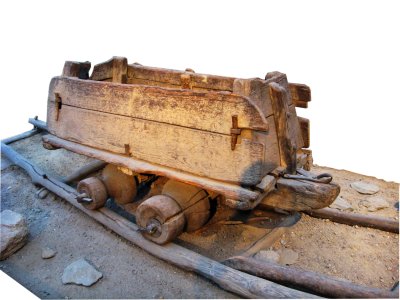
The concept of a trackway is an ancient one, with the Diolkos slipway in Greece being postulated as one of the first ones. Although the exact configuration and presence of grooved tracks is still debated in archaeological circles, Diolkos (Δίολκος, from the Greek dia διά, “across”, and holkos ὁλκός, “portage machine”) was constructed during the 6th century BCE to enable rapid transport of ships across the Isthmus land bridge and remained in use for over five-hundred years, according to historical reports and supported by recent studies of the beachrock, e.g. Saitis et al. (2022).
Over the past thousands of years, the use of tracks to guide wagons, carriages and carts along a defined path became ever more common and popular, from mining and transport, to industrial use, with human and animals providing the propulsion. Eventually large-scale track systems for transport would commence with the arrival of the steam engine and subsequent diesel-electric and electric trains that’d define railways as the defining transforming feature of the 19th century and beyond.
Unsurprisingly, each railroad company would initially set its own track gauge and other standards, with rolling stock essentially being limited to the tracks of the railroad company that had purchased it. This situation lasted until governments began to enforce a standard gauge, such as with the Railway Regulation (Gauge) Act of 1846 in the United Kingdom of Great Britain and Ireland.
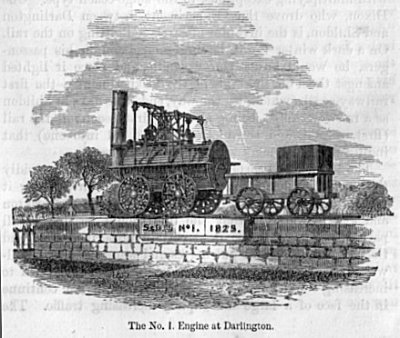
This act enforced the use of the then most popular track gauge in Great Britain which was the 1,435 mm track that was used by George Stephenson’s Stockton and Darlington railway in addition to other railways constructed around that time. Interestingly, this same act also enforced the use of a 1,600 mm gauge standard in Ireland, which is the reason why to this day Ireland and Northern Ireland use this track gauge.
This British 1,435 mm standard became adopted as what is known as ‘Standard Gauge‘ today, and would end up being adopted across much of Europe, North America and other parts of the world. Stephenson himself mentioned that he would have liked to have a broader gauge than 1,435 mm, and even today somewhere around forty percent of commercial railways are using another gauge, generally a type of ‘broad gauge’, as anything wider than standard gauge is referred to.
Fixing History
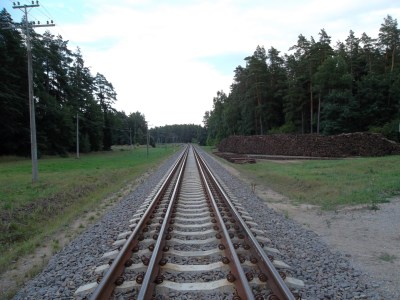
At this point in time, there are eight commonly used track gauges, with standard gauge followed by the Soviet-era 1,520 mm standard at over 15% and Europe featuring also the meter gauge (1,000 mm, Spain and Switzerland), Iberian gauge (1,668 mm, Portugal and Spain), the older 1,524 mm Soviet standard (Estonia, Finland), the aforementioned 1,600 mm gauge in Ireland and Northern Ireland. Only the 1,676 mm gauge standard is not present in Europe.
While the obvious way to fix this situation is to either replace all tracks and rolling stock, or to simply accept that international trains are impossible, there are a few intermediate solutions. A common solution is that of dual and mixed gauge tracks, which add one or more additional tracks to match whichever gauges the rolling stock can use. Of course, this still adds significant cost and is only worth it if rolling stock with all of these gauges regularly use the tracks.
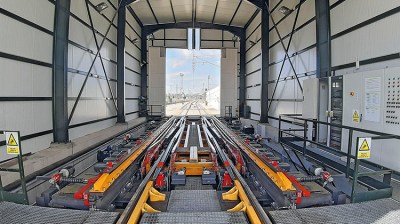
Another solution is that of variable gauge, which involves a bogie equipped with axles that can change their track gauge automatically using a gauge changing station that triggers the gauge changing mechanism as the bogie moves through it. This is how trains between Spain and France move between these countries’ different rail networks. Limitations here are that no variable gauge system supports more than two gauges, and variable gauge bogies limit the weight that can be placed on them, making them unsuitable for freight traffic.
Finally, there is bogie exchange, which involves swapping the bogies of the rolling stock. This is still in limited use for mostly freight trains, but does require the disconnecting and reconnecting of control and other lines, and can take about ten minutes to over an hour per rail car, which is why this approach has lost ground to variable gauge axle systems that do not require such specialist intervention. At this point in time, it’s still commonly used for trains between Ukraine and nations like Poland and Romania.
No Quick Fix
Even though there is a gradual move towards converting all of Europe to standard gauge, this is a slow, arduous process. While for new lines the choice to use 1,435 mm standard gauge is obvious – especially when the rolling stock can use either the old or new gauge as is the case in Spain – not every country has this easy way out. For former USSR nations like Lithuania and others, the ‘Rail Baltica’ proposal foresees switching from the old Soviet-era tracks to new tracks using standard gauge, which is a massive undertaking that has left many unconvinced.
Ukrainian Minister of Finance Oleksandr Kava noted some of the issues related to loading gauge, as rolling stock in Ukraine can be wider than is allowed in the EU outside of Romania and Bulgaria, and axle load is also far higher within Ukraine than is allowed on EU tracks. This hearkens back to Stephenson’s commentary in the 19th century, about the deficiencies of the bureaucratically selected standard gauge, and raises the uncomfortable realization that switching from ‘broad gauge’ to ‘standard gauge’ may actually be a downgrade, rather than an improvement.
However, much like the proverbial freight train with cut brake lines hurtling ahead with abandon, it seems that at least for Europe the 1,435 mm standard is unstoppable. It’ll be used for compatibility sake, regardless of whether it is in fact the best choice. In a similarly pragmatic fashion as when it comes to loading gauge and other aspects that affect international trains, the main priority appears to be to ensure that the trains can travel where they are needed.
Fortunately the other compatibility issues like the different electrical voltages used across electrified rail networks are significantly easier to solve.
The Easy(ish) Problems
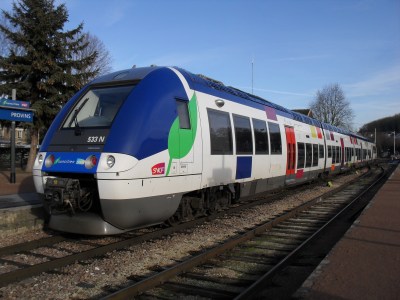
The electrification of rail networks occurred almost in as haphazard a fashion as the growth of track gauges, but compatibility issues have been essentially solved using multi-system locomotives. These can accept power input from e.g. overhead wiring, with voltages ranging from low voltage (750 V DC in Europe) systems to the multi-kV systems (up to 25 kV AC in Europe) that are in use today. Some of these locomotives are also diesel-electric units which can run on non-electrified tracks.
Generally, running such a multi-system locomotive requires no input from the driver, with automatic switch-over between power sources and adaptation to the voltages. Where things get a lot more complicated is with the railway signaling systems, which features different traffic control systems that in the case of e.g. automatic block signaling (ABS) requires that the train’s communication systems are compatible with the system, as well as the safety systems that are to prevent accidents in case of human error.
Regardless, these are fairly straightforward problems that only affect the rolling stock and can be fairly easy retrofitted into existing locomotives.
The Bottlenecks Of Today
In an ideal world all of Europe would be using a standard gauge that an engineer like George Stephenson would be happy with, and which would allow Ukraine to move the stored grain from its storage facilities to the EU’s harbors with zero complications and building of intermediate storage facilities as suggested in the current proposal. Unfortunately, this is not the world we live in.
Despite the generally excellent state of rail networks in Europe relative to many other regions, it bears keeping in mind the flaws and bottlenecks of the current railway system, and to look for ways that we can meaningfully improve on it. Even if generally these flaws are mostly an annoyance due to extra wait times and expenses, sometimes it means that Ukrainian grain becomes painfully stuck behind a gauge break, with the severe consequences which we are seeing this year.
[Header and Thumbnail photo: “Train Rail Tracks” by Evan Delshaw.]

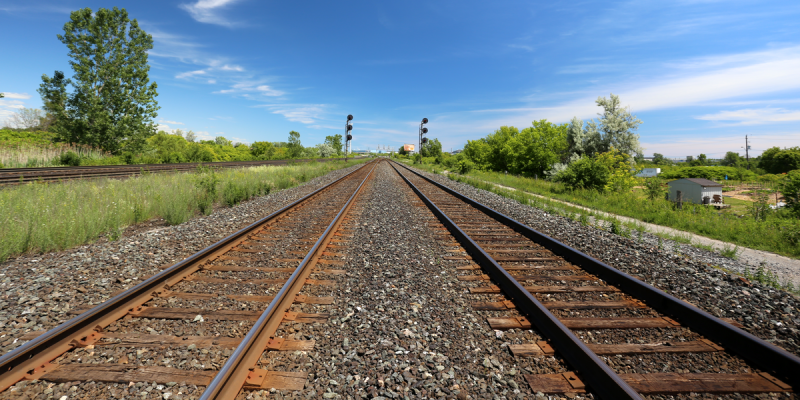













“Every culture that has depended on annual plants for their staple food crops has collapsed.” http://bit.ly/1ck0tnM
“Folks, This Ain’t Normal” Joel Salatin at Wanderlust’s Speakeasy – “Grow food not lawns” http://bit.ly/2Cmyk2s
Either trivially true as every culture has collapsed or not true at all as there are cultures standing now.
In any case the video is just some hippie preaching to the credulous choir. Same value as a young earth creationist lecture.
Dude doesn’t even appreciate the value of grasses. They build topsoil like nothing else. Just a twit.
#1 water consuming “crop” in the usa…. grass. we cant eat it. its just lawns and golf courses.
to be honest, tree leaves, twigs, and branches actually create the better part of healthy topsoil. it is mighty difficult to get beneficial mycelium to grow in a thin layer of grass clippings. however if ya take oak leaves for example and pile em up, toss in some chickens, they will shred the oak leaves to eat the pests and drop nitrogen into the remains. what remains is the perfect environment to quickly produce many different types of mycelium. and ya cant have a healthy garden without mushrooms. unless you let the grass grow very tall, it will not produce mushrooms, and it will not hold moisture very well, if at all. furthermore bees require specific types of polypore mycelium to use as an antiviral, this prevents deformed wing virus as well as other colony collapse precursors. these polypore mushrooms tend to grow on specific hardwoods such as oak.
it is more complex than “put material down, fewd grows”. not saying grass clippings are useless, however they are difficult to compost without the whole lot going anaerobic.
so 1 deciduous tree and its droppings are much more useful than grass any day of the week. to be honest, i have lived in houses with hard clay instead of a lawn, and barren sand instead of a lawn, both times i used the above mentioned techniques to make a lawn and garden where it was previously a plant desert. the type of material you drop down does matter.
now if ya add a hooved animal to an open field, that changes the story a bit, but then again , those are never just grass, they are always an ecosystem of flowers and plants and small trees. monoculture of grass destroys food. insects require biodiversity in the plant types. gardens require insects to grow, grass requires insects to be healthy without amendments.
Allan Savory explains in this TED Talk how grazing animals improves the ecology. https://www.youtube.com/watch?v=vpTHi7O66pI
He used to be an ecologist who believed in all the “Humans are bad. Mmm’kay?” BS until he became one of the people responsible for African elephants becoming an endangered species. The elephants’ grazing range was turning to desert so he came up with a plan. Shoot a whole bunch of them so they wouldn’t be over grazing.
Bad idea. The desertification accelerated.
Since then he’s researched and experimented, discovering that grazing animals spread seeds from the plants they eat, depositing them neatly pre-fertilized. They don’t “compact the soil”, they churn it up, burying the seeds.
If the vegan anti-livestock people were right, about anything, then the massive buffalo herds and the great plains grasslands of North America could never have existed.
But as happens when anyone formerly “on the inside” dares to split away, even partially, Allan Savory has been the subject of plenty of articles claiming he’s wrong about everything, despite his experiments with grazing livestock resulting in improving the land they’re allowed to feed on.
Except the part of the lawn over the septic drain field.
This is a very underresearched article. It’s not true that all the unloading has to happen on Polish border. Poland has 400 km long wide gauge tracks going to Ukraine. Google Linia Hutnicza Szerokotorowa.
Poland also has several kinds of variable gauge systems. Google SUW 2000.
Different signalisation and voltages aren’t a problem if you use diesel locomotives adapted to both signaling systems (Poland and Ukraine has these).
The main problem isn’t the different standards but simply lack of cars for transporting that much grain that quickly. Sea transport has crazy throughput compared to railway. Neither Poland nor Ukraine has anywhere close to the required number of trains to move that grain.
Not only trains are the problem, Romainian ports are now overwhelmed with all the additional grain as well. They aren’t keen on big investments for raising their capacity, of course, because once the war is over, these investments are lost.
It works reasonably well, though. Pre-war exports were 5 million tons of grain per month, which dropped to just 0.37 million in March. In May, exports were back to 1.7 million tons already. Next to export by train, ships on the Danube river and trucks are used. Numbers were recently given by the German government.
With some luck, Ukraine will be able to liberate Snake Island before too long. Yes, this “F*ck you, Russian warship!”-island. This then allows grain ships from Ukrainian coastal waters directly into Romainian coastal waters, and from there into international waters. Slava Ukrainii!
The “Iberian gauge” of 1668mm is a 1955 compromise between the older Spanish gauge of 1672mm and the Portuguese gauge of 1664, chosen such that Portugal’s trains can run on Spanish tracks but Spanish trains can not invade Portugal — or so I was told, as the English Wikipedia doesn’t mention this trivia.
An interesting configuration happens in a few places in the world where trains of the same gauge but different car body widths need to coexist on the same track.
Such as standard gauge goods trains and (narrower) passenger light rail vehicles that ride on the same track: the wider goods trains would hit the platform so they (or the trams) take an interlaced diversion track to be further away (or closer to) the platform.
Another case where this happens is the “double track” Gemmenich Tunnel between Germany and Belgium, which has an interlaced track to allow trains with (overwidth) military convoys to run almost in the middle of the tunnel.
Photos at https://en.wikipedia.org/wiki/Gauntlet_track
Spanish trains usually end up their useful life in India, as they use a similar gauge
And you didn’t title the article: “The Grain in Ukraine is Mainly Stuck on Train”???? For Shame.
The grain in Ukraine can’t leave on a plane?
No. Because a plane from Ukraine couldn’t carry enough to Spain.
What a pain!
It worked for Berlin in 1948.
A plane from Ukraine have carried plenty enough to Spain if some criminals hadn’t destroyed it a few months back….
The grain in Ukraine fills mainly empty trains
repeat after me: “The grain in Ukraine falls gently down the drain”
We explain why a Ukraine Grain Train would derail on Spain’s plains.
Or,
The passengers will please refrain.
In all fairness, the reason the Ukrainians cannot export by sea is because they mined the access to their own ports fearing a Russian invasion of Odessa.
If they’d remove these mines, they still couldn’t export. They’d have to pass Russian warships. Given the recent history of Russia regularly not holding its promises, nobody is willing to take this risk.
Situation is improving, though. Coastal defense weapons arrived in Odesa, mines are no longer crucial. The warship problem persists, though.
Grain in the Ukraiine Brane….
Yeah, a “works for me” became a “works for us”.
Then there was the “discovery” the “us” should inclulde the neighbouring countries.
” All which may lead one to wonder whether we’ll ever see a solution to this historically grown problem.”
Pipeline to market.
https://www.farmprogress.com/sorghum/building-feed-grain-pipeline-throughout-southeast
I’m going to assume you didn’t read TFA. They’re talking about a production pipeline for custom sorghum hybrids (a vertically integrated animal fodder company) rather than an actual pipe that moves products.
The idea actually is quite old. There’s a 1980’s link I didn’t use. If Ukraine has a preexisting pipeline, they could see about modifying one to deal with this problem.
“Corn don’t grow at all on Rocky Top, dirt’s too rocky by far,
That’s why all them folks on Rocky Top drink their corn from a jar!”
Ha!
If the grain was put in standard sized 20 or 40ft top-loading containers, then surely its just a question of craning the container from one gauge train to another, or even onto a truck to ferry from a Ukrainian freight yard to a Polish one. After all a container from a Chinese train can be loaded into a ship then offloaded onto a Russian, Spanish, Irish or standard gauge train at its destination. It is what ISO containers are designed for.
Sure, it’s cheaper and more convenient to pour it into bulk hopper wagons, but that appears not to be an option.
Containers would be a simple solution for this problem. To be fair, top loading might be a bit “unnecessary” since one can just tilt the container and fill it to the brim, and empty it in the same fashion. Though, might overload it in that way…
But yes, standardized sized containers fits on practically any track, and being able to take about 25 tons of cargo with each is a lot of grain. But yes, likely not as cheap mode of transport as hopper cars or bulk carrying ship.
You cannot do that with normal freight containers that are mostly air- and watertight. Condensed water would promote mold growth and spoil the grains. Besides that, there’s still a container shortage in Europe (a side-effect of Covid-19).
A lot of containers are open/canvas top.
But containers for bulk transport goods are simply uneconomical.
The real problem is Ukrainian ports are blockaded or occupied and Russia’s (bigger grain exporter than Ukraine) exports are sanctioned, so going to China.
True, but even less economical to transfer it from one set of grain wagons to another set that differ only by wheel gauge, or let it rot in silos at a blockaded port.
Bulk cargo hoppers drain from the bottom onto handling conveyors and load from the top from similar conveyors.
Crane operators are well paid.
It’s not clear that shipping containers would actually be cheaper vs. hoppers. In the end it’s all got to go into a silo for the short term.
Given the nature of Ukrainians and Russians, you can bet very little will be left to rot. Unless you count fermentation as rotting. They will just add to their respective national strategic vodka reserves (stored in underground salt domes), or bribe the Finns with it.
We’re talking about approx. 1 million containers per month, or 30,000 a day. This needs quite some capacity for changing trains at the border. Which doesn’t exist.
Pre-war, Ukraine exported some 5 million tons of grain per month.
There is a group on Twitter gathering out of the box ideas to get the grain moving. @UkrainesGrains
One idea I put forward is to use bulk hopper wagons, but instead of a bogey change, arrange the TLF interconnect to be vertically stacked.
One train drives over the other and stops, and a whole trainload can be offloaded to the next train in a matter of minutes, with minimal contamination.
Then the empty train goes back into Ukraine somewhere for another load.
“However, much like the proverbial freight train with cut brake lines hurtling ahead with abandon…”
That’s not how air brakes work…
We can thank Westinghouse for that!
True, but a proverbial freight train can have whatever kind of proverbial brakes it wants.
You clearly haven’t watched enough movies! Or Road Runner cartoons…
B^)
IIRC, The Orient Express does a bogie exchange between China and Russia (it might occur in Mongolia)
That’s the Beijing branch of the Trans-Siberian Railway from Moscow to Vladivostok. The Orient Express ran from London or Paris to Athens or Istanbul.
(Swallowing a bit of pride)
Thanks for the correction.
Even ignoring all of this, there’s the simple fact that the number of trains to replace a single voyage of a container ship let alone a bulk carrier is simply infeasible.
I think someone once did a calculation of what it would take to replace the Suez Canal with trains, I’ll roughly rederive it here:
The Ever Given has a capacity of just over 20,000 TEU – these have a length of 20 feet
An average freight train in the US is now approx. 6800 feet long – https://www.reuters.com/article/us-usa-train-safety/growing-length-of-u-s-freight-trains-in-federal-crosshairs-after-crashes-gao-idUSKBN1E01B9
6800/20 = 340 TEUs per train
OK, maybe they’re using well cars and double stacking, so let’s make that 680 TEUs per train
That’s still 29 train runs per single Ever Given
OK, but grain wouldn’t be carried on the Ever Given. The most common bulk grain carrier is between 30,000 and 37,000 tonnes capacity. A 20ft bulk container could hold about 35 tonnes, so say 1000 TEU per bulk carrier. Given your figure of 340 TEUs per train (we don’t run DSTs in Europe), I make that about 3 US trains, or probably 6-10 European ones. Not very economical, but possible.
What’s the relative cost of a run on the Ever Given from the Ukraine to population centers of western Europe?
And where would it even go? Odessa on the Black Sea, through Istanbul into the Mediteranean? Land in Venice or Marseille — and then train again?
(Serious question. I can’t figure how the “ship it by boat” was working before the blockades.)
You can’t get an Ever Given up the Donau….
Transhipment. You woul have large coasters shipping grain from Odessa (or other ports) to seaports in Europe and Afrika, then smaller river cargo ships that shuttle the grain inland up to ports (or trains, or trucks, whatever method is available). This happened before the grain landed in Odessa anyway: Tractor from field to farmer’s or village grain silo, then truck to local cooperative grain silo, then rail (or truck, or ship) to Odessa.
The grain silos in big sea harbours aren’t there to hold a year’s worth of grain, just to hold between shipments.
Exports to Western Europe were by train and ship. As with any other cargo, the cheapest available carrier is chosen. Rail transport is operated by freight companies like Transcereales and PKP Cargo.
The larger part of Ukraine’s grain exports goes to Africa and other destinations where there’s no alternative to a ship. Currently, grains are hauled to the port of Constanța (Romania) for loading. While this workaround cannot provide the needed capacity, it is hoped that partial shipments can prevent destabilization of northern Africa.
The reason they are not using Odessa has nothing to do with Russia blockading ports. They have already said they are not interested in doing that, aside probably checking for illegal weapon imports, etc. The Kiev regime shot themselves in the foot when mining the port access to stop an unlikely invasion of Odessa.
Russia saying they are not going to do something has turned out to be not always right, recently.
We’re Murican here. None of that metric stuff, standard gauge is 4 foot 11 1/2 inches.
D&RGW had dual wheel eqiupment but only on some of it’s 40 ft cars
Just to remind everyone that the definition of an inch is 2 .54 cm and not the other way around. Fun, useful and practical as the old system is it has been overtaken by the metric system and will continue to be overtaken. It is not a good idea to ignore what you are not familiar with.
Mind you, I still don’t know what my shirt collar size is in metric.
I’m not sure what my shirt color is in metric.
Whatever it is, “it’s complicated” is a valid answer.
https://www.shimadzu.com/an/service-support/technical-support/technical-information/uv-vis/uv-ap/color/index.html
Color is in your head anyway. Just show me the reflectance curve, please. K, thx.
450nm?
Shipping containers will always be in US units. We invented them and made them exactly 8 feet wide, 8.5 feet tall, or 9.5 feet tall for High Cube, and a few inches shorter than 20, 40, or 45 feet so the door handles and latches fit into the nice, even length dimension.
Everyone else looked upon CONEX and saw that it was good, then hurriedly scrapped most bulk break cargo ships and built new ones for containers.
Thousands of ships, rail cars, and trucks, all built to handle millions of US dimension shipping containers going everywhere around the world.
Ironically, it was the invention of CONEX that doomed the nuclear powered cargo ship. The only one ever built, NS Savannah, was built just a bit too soon, as a break bulk ship. The idea was that not having to take any time at ports for refueling would make it more economical to operate than oil burning ships.
CONEX erased that advantage by making loading and unloading faster, shifting more cargo than any break bulk ship ever could.
Must be Murican. Can’t use an apostrophe correctly. And even gets the dimensions wrong.
American standard railway gauge is the same as Stephenson, 1435 mm. Or, in American Customary Units, 56.5 inches, 4 feet, 8-1/2 inches.
Reconciling two slightly-different track gauges has sometimes had horrific consequences in the past:
https://en.wikipedia.org/wiki/Angola_Horror
We’ve got the same problem here in Australia. Queensland, NSW and Victoria have different gauges. There are some interstate lines, but the bulk of the rolling stock is confined to its home state.
As for Ukraine, if Russia keeps trying to destroy the existing rail network (not that I wish this on them or support this in any way), Ukraine may have the opportunity to re-build anew with compatible gauge for trade with its neighbours.
But what is the guage of The Straight?
pedant
Gauge
pedant
Use trucks. EU can help with this if they are truly interested. Also waterways. Where there is will, there is a way.
1. Ukraine is not a so big wheat producer. https://leadstories.com/hoax-alert/2022/03/fact-check-ukraine-does-not-grow-25-percent-of-worlds-wheat.html
2. A neglected railway Ukraine – Romania (Galați), soviet-standard gauge, is on repair. Original romanian language article: https://adevarul.ro/locale/galati/linia-cale-ferata-larga-ucraina-portul-galati-repusa-circulatie-miza-comerciala-imensa-1_629c5a825163ec427137c834/index.html Google translate: https://adevarul-ro.translate.goog/locale/galati/linia-cale-ferata-larga-ucraina-portul-galati-repusa-circulatie-miza-comerciala-imensa-1_629c5a825163ec427137c834/index.html?_x_tr_sl=ro&_x_tr_tl=en&_x_tr_hl=ro&_x_tr_pto=wapp
3. A joke from these days in Romania: If weapons can come to Ukraine, why the grains can’t leave Ukraine?
For #3, I wonder why you have it as joke. I wonder the same, so can someone please answer this question?
Economics. Arms are high value, relatively low volume commodities, so can be sent by air to Poland airports, or even safe Ukrainian ones, then onward shipped by truck. Rocket launchers, tanks, troop carriers, etc. are self-propelled, so even easier. Grain is high volume, bulk cargo, so needs low cost transport to make it economical.
Grain does leave Ukraine. Just not as much as needed.
Distinction is: these weapons are a few thousand tons, grain is 5 million tons per month.
Regarding the picture of the dual-track railway in Lithuania:
* The inner track is definitely less than 1435mm/1520mm
* The Rail Baltica project is implemented in normal gauge.
* The Rail Baltica has 2/4 tracks
So this picture might be something completely different.
I guess this is a 1520mm gauge combined with a narrow gauge.
The rails aren’t paired like that. One gauge is outer left to inner right and the other is outer right to inner left.
Wikipedia has an article on the Great Gauge Change that occurred in the US in 1886:
https://en.wikipedia.org/wiki/Track_gauge_in_the_United_States#Unification_to_standard_gauge_on_May_31_%E2%80%93_June_1,_1886
The History Guy has a good video about it too:
https://www.youtube.com/watch?v=4v81Gwu6BTE
Thanks for the link!
Shows it’s possible to rapidly do a change in a short time over a long run of track, after a massive amount of prep work. But doing all that while armed forces from another country are running around blowing things up and killing people would make it a bit more difficult.
Only if you have wooden sleepers.
For grain, one could imagine a section of track (of 1520mm gauge) on a trestle running over a section of track (of 1435mm gauge) below it. With a full train above and an empty train below, you could just “drop” the grain from one to the other.
Whether it’s more economical to build this or to just chase the Russians out of the seaports is another matter.
It’s a shame the article didn’t mention the great change from Brunel’s Broad Gauge through mixed gauge to Standard Gauge on the Great Western Railway in the UK.
Jon Worth’s [1] CrossBorderRail project [2] aims to highlight missing cross-border rail links in Europe. He’s recently embarked on a huge rail and bike journey that crosses every internal border inside the European Union (and EFTA countries) that you can cross by train. En route he’s stopping off to organise a meeting in the political capital of each country to discuss the missing rail links with local activists.
[1]: https://twitter.com/jonworth
[2]: https://crossborderrail.trainsforeurope.eu/
The recently opened Elizabeth Line in London operates, I understand, on 3 different signalling systems, as it shares some track with other (same-guage) systems. Change is effected automatically.
Signalling systems (and train protection systems) are usually the least of a problem for freight trains; it concerns only the loco (and in some systems, the end of a train, which can be solved with a FRED) and locos are easily exchanged near a (signalling system) border. It isn’t hard to equip locos with multiple signalling systems, but being a vital safety equipment takes considerable engineering and thus time.